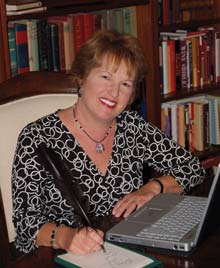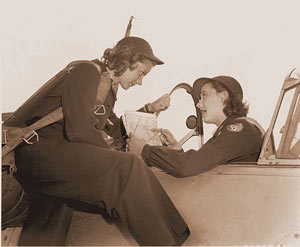
I heard about the Congressional tribute to Women Airforce Service Pilots (WASPs) of World War II during the same week that I was interviewing candidates for our second annual “Leading Ladies of Lake & Sumter” feature.
I was captivated by the story of 1,800 young women who paid their own way to Avenger Air Field in Sweetwater, Texas, in 1942 to serve their country as America’s first female military pilots. The obstacles they faced, however, were no match for their passions for flying and patriotic duty. These courageous aviators opened many doors for future generations to follow, but their impact was so quiet that many historians forgot about them. With Memorial Day around the corner, it is only fitting to share their story in our annual women’s issue.
 The training to become a WASP was rigorous—the same as the men’s except for combat maneuvers—and 1,078 women out of the 1,800 who applied earned their flight wings. One other thing was different. A woman had to have a pilot’s license before she even arrived for training “the Army way.”
The training to become a WASP was rigorous—the same as the men’s except for combat maneuvers—and 1,078 women out of the 1,800 who applied earned their flight wings. One other thing was different. A woman had to have a pilot’s license before she even arrived for training “the Army way.”
These women were crucial to the war effort. They towed targets for live anti-aircraft artillery practice and simulated strafing missions. They ferried troops. They transported cargo. From September 1942 until December 1944, WASPs delivered more than 50 percent of the combat airplanes within the United States from aircraft factories to military training bases. In all, WASPs flew 60 million miles of operational flights. They indeed were the wind beneath the wings of the male combat pilots who were desperately needed overseas.
Unbelievably, WASPs were not considered part of the military. When one died (and 38 did) other WASPs would collect money if the fallen woman’s family couldn’t afford funeral expenses. The coffin went home with no flag, no military honors. And just as they had paid their own transportation to Texas in 1942, the women also had to get themselves home when they were dismissed in December 1944.
Although they were stationed at 120 air bases across the U.S., the women shared an irreparable bond of sisterhood that has lasted 70 years. Several clutched photos of their comrades during the recent ceremony in Washington, D.C., that awarded WASPs a Congressional Gold Medal, the highest civilian honor given by Congress. Now in their late-80s and 90s, only 300 of them are thought to be alive.
In a project known as “Wings Across America,” Annelle Henderson Bulechek was interviewed before her death. Her words—and those of her comrades—were eerily similar to the advice that I heard over and over from our own “Leading Ladies.”
“You can be whatever you set your heart and head to be,” said Annelle, a 1944 WASP who attended Officers Training School in Orlando. “Don’t let anybody tell you that you can’t—because 1,078 women pilots did it in World War II.”
During my interview with a local leading lady, she recited the New Testament quote, “To whom much is given, much is expected.” May we never forget just how much the generations of women before us gave.
Happy Reading,
Mary Ann






